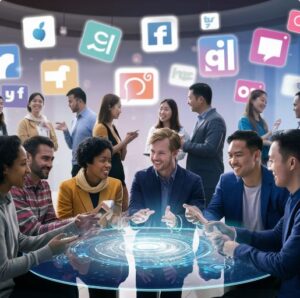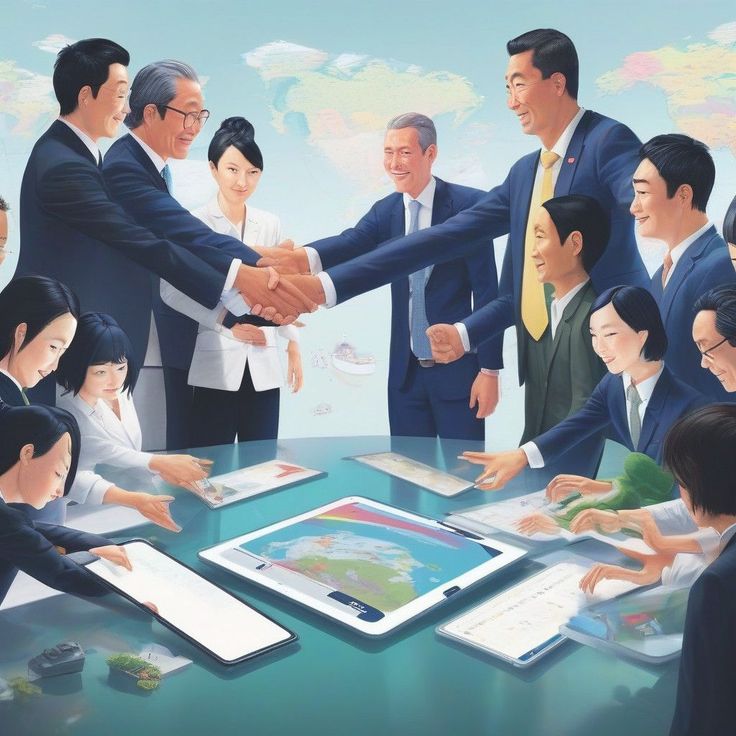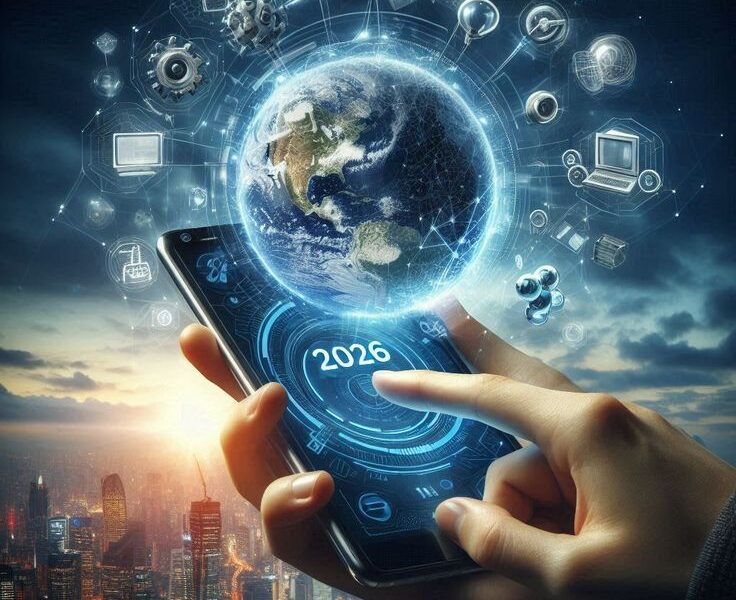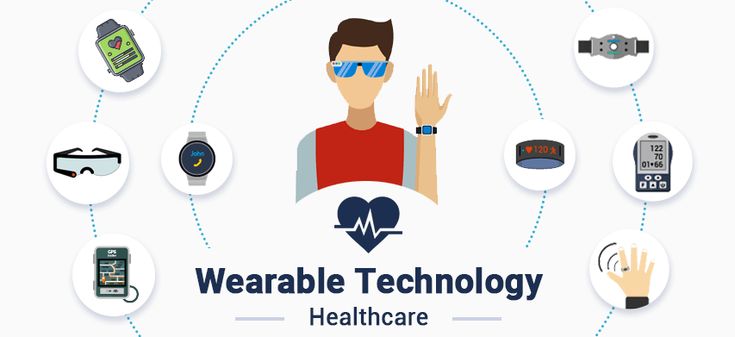🚀 Fifth Generation Revolution: New Foundations of Global Trade.

🌐 New Era of Global Communications: The End of Distances
5G has introduced a revolutionary change in the communications sector that has not only altered the concept of distance but has also fundamentally transformed the quality and nature of connectivity. High-definition video conferencing, real-time language translation, and holographic communications are no longer technical terms but have become everyday realities. In the medical field, doctors can examine patients in remote areas in real-time; educational institutions can provide uniform quality education to students globally; and business people can finalize international agreements without any obstacles. The low latency of 5G has made remote surgery possible, where a surgeon sitting in one part of the world can operate on a patient located in another part. This change is not only making communications faster but is also making them more comprehensive, reliable, and accessible. For rural and remote areas, this is a new ray of hope to join the race for development. In cross-cultural communications, this change has opened new doors, where distances between different cultures are diminishing. The robustness of communication systems in emergency situations has played a vital role in saving lives. In the education sector, students in remote areas can now directly benefit from the best teachers. In the business world, virtual meetings have significantly reduced travel costs and time. All these changes together are forming a global society where there are no barriers to communication.
💡 Industrial Innovation: The Web of Interconnected Industries
5G has given a new dimension to industrial innovation, where factories of different industries are connecting with each other like parts of a vast neural network. 5G’s capability to connect a large number of Internet of Things (IoT) devices has made smart cities, intelligent transportation, and integrated industrial systems possible. Industrial robots can now communicate with each other in real-time, make automatic adjustments in production processes, and predict potential failures in advance. In the energy sector, 5G has promoted smart grids that can better manage energy distribution and usage. In agriculture, sensor-equipped tractors and drones can monitor crop health in real-time and use fertilizers and water as needed. All these innovations are not only increasing productivity but are also leading to better resource utilization, environmental protection, and improved quality of life. In the research and development sector, 5G has opened new possibilities where scientists can cooperate with each other in real-time. The use of virtual reality in industrial design and prototyping processes has shortened development cycles. 5G has made artificial intelligence and machine learning algorithms more effective, enabling automated decision-making in industrial processes. All these developments together are precursors to a new revolutionary change in the industrial sector.
🏭 Supply Chain Transformation: Transparency and Flexibility
5G has transformed the global supply chain into an intelligent, transparent, and flexible system. Real-time tracking, automated inventory management, and predictive analytics have solved traditional supply chain challenges. Sensor-equipped containers continuously send information about their condition, temperature, and location, reducing the risk of spoilage for perishable goods. The combination of artificial intelligence and 5G has made the supply chain not only efficient but also predictive, where potential obstacles can be identified in advance and alternative routes can be suggested. This change is proving equally beneficial not only for large business groups but also for small businesses, which can now easily join the global supply chain. In emergency situations, supply chain flexibility has ensured the delivery of essential goods. Under the effects of climate change, supply chain resilience has increased. Integration with blockchain technology has improved the transparency and verification process of the supply chain. Additionally, the growth of 3D printing and distributed manufacturing has challenged traditional supply chain models. All these changes together are forming a supply chain that is not only efficient but also environmentally sustainable and socially responsible.
🔧 Remote Operations: Industrial Autonomy
The low latency of 5G has elevated remote operations to a new level. In the construction industry, operators can skillfully control heavy machinery from a distance. In the mining sector, automated equipment can work in hazardous areas. In the oil and gas industry, operations in remote locations can be centrally controlled. This change is not only increasing efficiency but is also playing a significant role in protecting human lives. Remote control of ships and aircraft has introduced new innovations in the transportation sector. In space exploration, 5G has made it possible to control equipment located far from Earth. In underwater operations, remotely controlled devices have promoted deep-sea exploration. All these developments are reducing the need for human intervention in the industrial sector, leading to increased efficiency and reduced risks. In the coming years, the concept of the industrial metaverse has given a new dimension to remote operations, where operators can work in a virtual environment.
🏥 Healthcare: Remote Treatment
5G has revolutionized the healthcare sector. Real-time remote monitoring of medical devices, continuous data acquisition from wearable devices, and virtual consultations have brought medical services within everyone’s reach. Emergency response systems can now instantly access a patient’s complete medical history. In surgical robotics, the low latency of 5G has made complex operations possible. Combined with artificial intelligence, 5G has introduced new methods of disease diagnosis and treatment. In mental health services, virtual therapy sessions have made access to treatment easier. In clinical trials, real-time data collection and analysis are speeding up the research process. All these developments are not only improving the quality of medical services but are also expanding their accessibility. Residents of rural and remote areas can now benefit from the best medical services. In the management of chronic diseases, modern technology has made patients’ lives easier. During pandemics, 5G has strengthened the medical system through remote monitoring and virtual consultations.
🌾 Agriculture: Precision Farming
5G has promoted precision farming in the agricultural sector. Data from sensor-equipped fields can be sent for analysis in real-time, autonomous tractors can run on specific routes, and drones can monitor crop health. This change is not only increasing production but is also saving water, fertilizers, and other resources. Under the effects of climate change, 5G has helped farmers make better decisions. Automated control of irrigation systems is improving water usage. Livestock monitoring has improved animal health and productivity. Transparency in supply chain management has helped farmers get fair prices. All these changes together are precursors to a new revolutionary transformation in the agricultural sector.
🎮 Entertainment: New Forms of Engagement
5G has completely transformed the entertainment industry. Cloud gaming has brought high-end games within everyone’s reach, augmented reality has opened new paths for education and entertainment, and virtual reality has immersed users completely in the digital world. Virtual experiences of live events have extraordinarily increased participant numbers. In content creation, 5G has enabled real-time collaboration and remote production. Personalized content recommendation systems have improved user experience. Interactive storytelling has established new entertainment standards. All these developments are proving helpful in rapidly advancing the entertainment industry.
🚗 Intelligent Transportation: Integrated Transport Systems
5G has initiated a new revolutionary change in the transportation sector. Connected vehicles can communicate with each other and with infrastructure, exchange data to improve traffic flow, and activate accident avoidance systems. Public transportation systems can now provide real-time information to passengers. Autonomous vehicle platoons have improved fuel efficiency and traffic flow. Smart parking systems have solved urban transportation challenges. Emergency vehicle prioritization has reduced response times in emergencies. All these changes together are precursors to a new revolutionary transformation in the transportation sector.
🔒 Security and Privacy: New Challenges and Solutions
With the spread of 5G, new challenges of security and privacy have also emerged. Network slicing has introduced separate security protocols for different users, end-to-end encryption has ensured data protection, and blockchain technology has taken transparency and security to new levels. Combined with artificial intelligence, 5G has improved threat detection and prevention systems. Identity management systems have ensured the protection of user identities. Privacy-preserving technologies have enabled data analysis while maintaining its confidentiality. All these measures are ensuring the security of 5G networks and the privacy of users.


